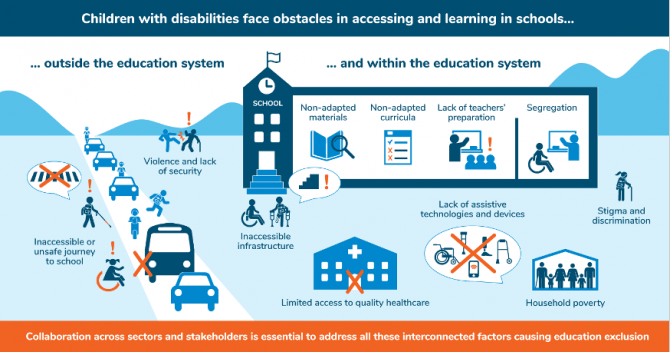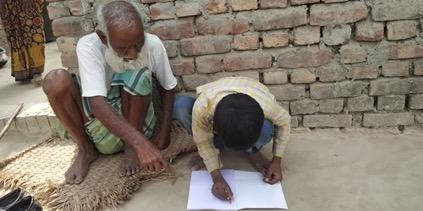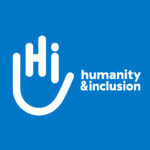Step-up Efforts for Disability-Inclusive Education

Accessible Reading – Alt Text: Children with disabilities face obstacles in accessing and learning in schools. Obstacles exist both within and outside the education system. Within the education system, obstacles include: inaccessible infrastructures, non-adapted materials, non-adapted curricula, lack of teachers’ preparation, and segregation of children with disabilities in separated settings. Outside the education system, obstacles include: stigma and discrimination, limited access to quality health care, lack of assistive technologies and devices, violence and lack of security, inaccessible or unsafe journey to school, and poverty of the households. Therefore, collaboration across sectors and stakeholders is essential to address all these interconnected factors causing education exclusion.
As the education sector learns from the pandemic, it is clear that we cannot afford to leave another generation of children behind. The struggle of children with disabilities to realize their right to education continues. Removing barriers to access and thrive in education is an imperative that requires cross-sectoral collaboration and investment.
Children with disabilities are still denied their right to education
The inclusion of children with disabilities in the school system has made progress in recent years. Yet, 50% of children with disabilities in low- and middle-income countries are excluded from education.[1] Restrictions on access and achievement in education are even more severe for girls with disabilities: only 42% of them completed primary school, compared to 51% of boys with disabilities.[2]
Children with disabilities who do make it to school are often educated in separated schools,[3] or receive an education that is not adapted to their needs. This means that millions of children are deprived of even the most basic opportunities to learn and to progress higher levels of education and training, owing to disability discrimination.
Multiple obstacles hinder their access to and progress in education
Obstacles for the education of children with disabilities exist both within and outside the education system. Accessible school infrastructures, adapted teaching material, and well-prepared teachers are necessary, but more is needed to ensure that children with disabilities actually access and thrive in education.
There are a thousand scenarios: children do not have access to rehabilitation services - too far away or too expensive; their ability to be autonomous and well in daily life deteriorates and they find themselves unable to attend school. Parents have lost their jobs; in the absence of a social safety net, they ask their child to drop out of school and support the family. Prejudices in society can be strong: a person with disabilities is often misbelieved as incapable of learning, and the family might think that there is no point of sending them to school...
Effective inclusive education policies are those that ensure that the multiple barriers faced by children with disabilities are tackled, in collaboration with stakeholders amongst civil society and public authorities, and in synergy with other sectors of intervention like health, rehabilitation, social welfare, leisure and sports, just to mention some.
COVID-19: opportunity in crisis
Global progress in building inclusive education systems is now threatened by the COVID-19 pandemic, which has disrupted the educations of most children, and has diverted funds away from the education sector.
For many children with disabilities, school closures meant exclusion from learning opportunities, because several distance education initiatives were inaccessible for them; 90% of the caregivers of children and young people with disabilities reported encountering obstacles to learning.[4] School closures also resulted in many children missing out on crucial services that are often available through schools (nutrition, social protection, psycho-social support…). Children with disabilities are among the children who need these services the most.
We already know that crises can profoundly impact the wellbeing of children and young people; that such crises can disrupt family and community cohesion; and that they may increase the risk for children to be exposed to harm from violence. The complexity and interdependency of children’s care, safety, wellbeing, and education are highlighted in times of crisis; this can serve to accelerate the adoption of coordinated multi-sectoral approaches.

Photo Credit: @Humanity & Inclusion
Khursaid attended school regularly before the lockdown. During the lockdown, his glasses broke, and ever since he has had difficulty in performing everyday activities, particularly in doing school work. He has no access to internet and his mother just has a simple phone which is not suitable for distance learning. (Testimony collected by Humanity & Inclusion, Nepal)
Investing and working across sectors to remove all obstacles
Despite the COVID setback, governments and global education actors are now in a unique position to renew efforts in order to not only address the impact of the pandemic, but also build inclusion through a multi-sectoral approach.
- Invest More - There is a US$148 billion annual financing gap in education, in low and middle-income countries,[5] two third of which have reduced their budget to education as a result of the pandemic.[6] It is clearly time to step-up domestic and international investments in education: we cannot afford to leave another generation of children behind.
- Invest for inclusion - Strengthening education systems requires fostering an inclusive learning environment for all children and, at the same time, investing in the most marginalized groups, including children with disabilities. Targeted interventions would significantly improve access to quality education for all.
- Collaborate across sectors - Establish mechanisms and develop strategies where a number of linked services (i.e. rehabilitation, health, social protection, social support, nutrition…) for children with disabilities can be provided in a coordinated manner and at a single site, for instance in schools.
References:
[1] Education Commission, (2015). "Learning Generation." [2] UNICEF, (2013). "The State of the World’s Children: Children with Disabilities" [3] The Global Education Monitoring Report (UNESCO, 2020) states that 40% of countries in the regions of Asia, Latin America and the Caribbean still lean towards segregated education systems. [4] Alliance for Child Protection in Humanitarian Action, Inter-agency Network for Education in Emergencies. “No Education, No Protection: What school closures under COVID-19 mean for children and young people in crisis-affected contexts”. [5] UNESCO, (2020). "Act now: Reduce the impact of COVID-19 on the cost of achieving SDG 4." [6] World Bank Group. (2021). “EDUCATION FINANCE WATCH 2021”
Valentina Pomatto is the Inclusive Development Advocacy Manager at Humanity & Inclusion (HI). Valentina holds a Master’s Degree in International Relations and Human Rights. Prior to joining HI in 2018, she worked for different NGOs, covering both project management and advocacy roles at the European and global levels. Valentina coordinated the publication of the advocacy report “Let’s break silos now! Achieving disability-inclusive education in a post-COVID world”, released by HI.

